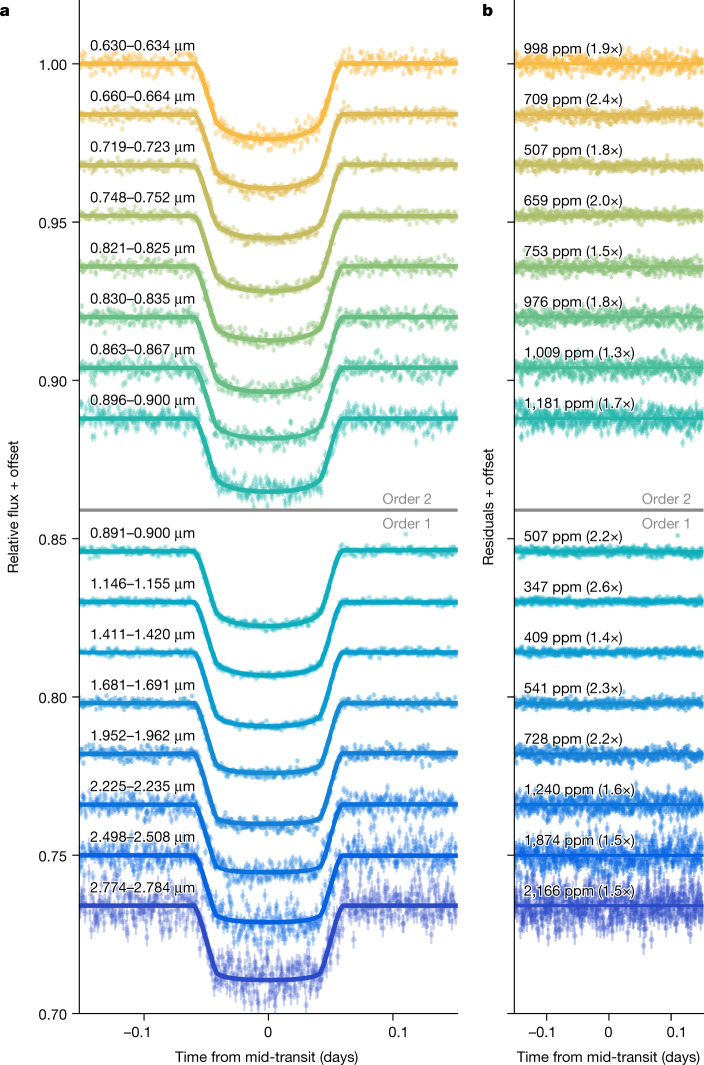Fig. 1. Selection of systematics-corrected spectrophotometric light curves and residuals for the transit of WASP-39b observed with NIRISS/SOSS for orders 1 and 2.
An exoplanet transit model (solid line) was fitted to each light curve with chromatic_fitting using a quadratic limb-darkening law. The limb-darkening coefficients, planet-to-star radius ratio (Rp/R*) and out-of-transit flux were varied in each wavelength channel, whereas all other parameters were fixed. The residuals to the best-fit models are shown for each light curve. The wavelength range for each channel is denoted in panel a, whereas parts-per-million (ppm) scatter in the residuals is denoted in panel b. We calculate the ppm as the standard deviation of the out-of-transit residuals. We quote the ratio of the predicted photon noise for each bin in brackets. The reductions are from the nirHiss and chromatic_fitting routines described in Methods. We define our errors as the 1σ uncertainties extracted from the stellar spectra. (https://github.com/afeinstein20/wasp39b_niriss_paper/blob/main/scripts/figure1.py).

